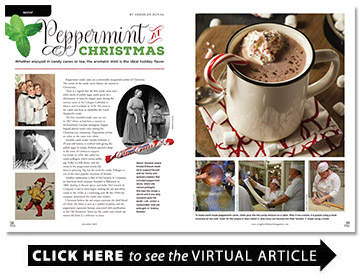Peppermint at Christmas
Whether enjoyed in candy canes or tea, the aromatic mint is the ideal holiday flavor
BY Deborah Royal

Peppermint candy canes are a universally recognized symbol of Christmas. The stories of the candy cane’s history are rooted in Christianity.
There is a legend that the first candy canes were white sticks of pulled sugar candy given by a choirmaster to keep his singers quiet during the nativity scene at the Cologne Cathedral in what is now Germany in 1670. The story is the candy was bent to symbolize the Good Shepherd’s crook.
The first recorded candy cane use was in 1847 when, as had been a custom in his homeland, German immigrant August Imgard placed candy canes among his Christmas tree ornaments. Peppermint oil has no color, so the canes were white.
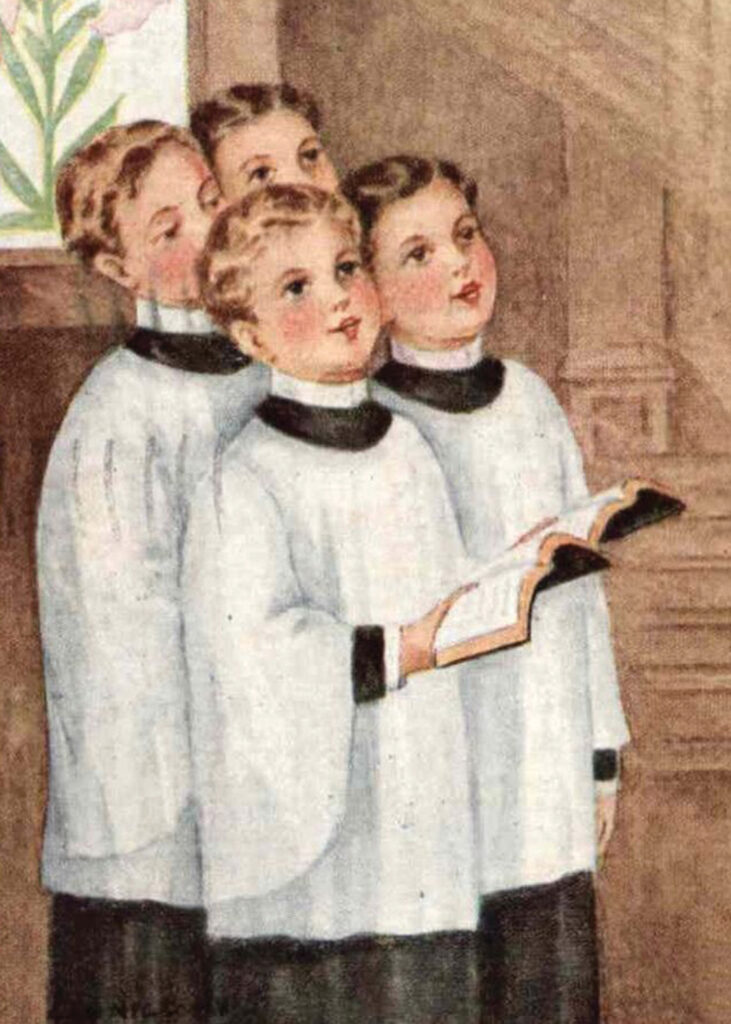
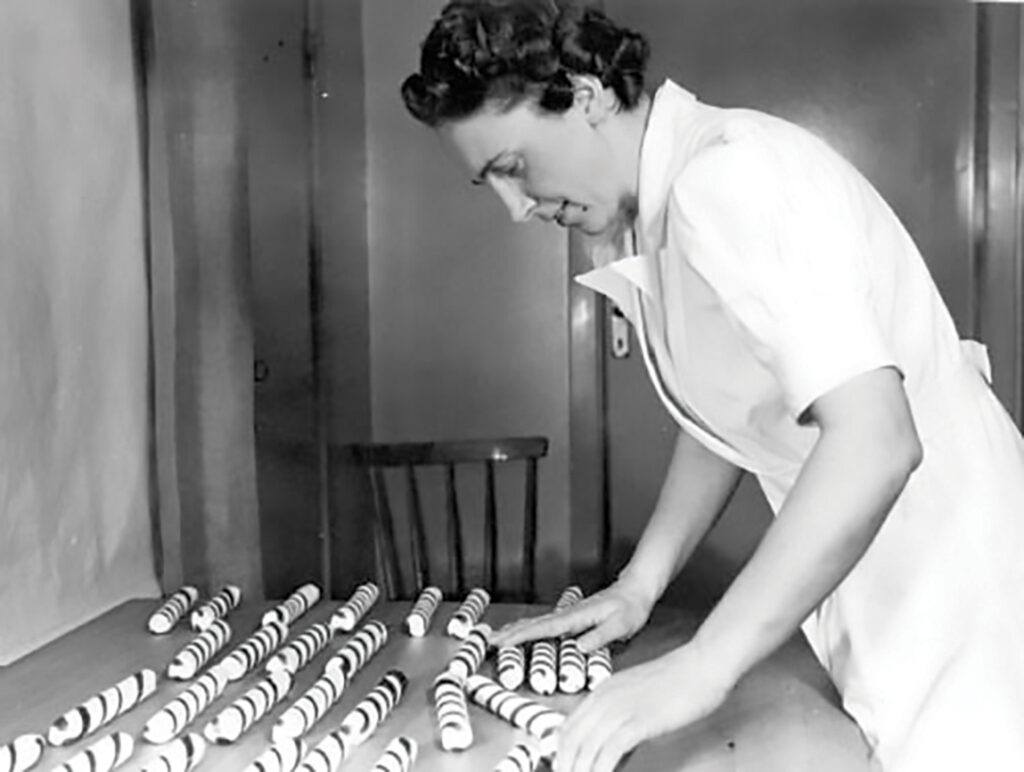
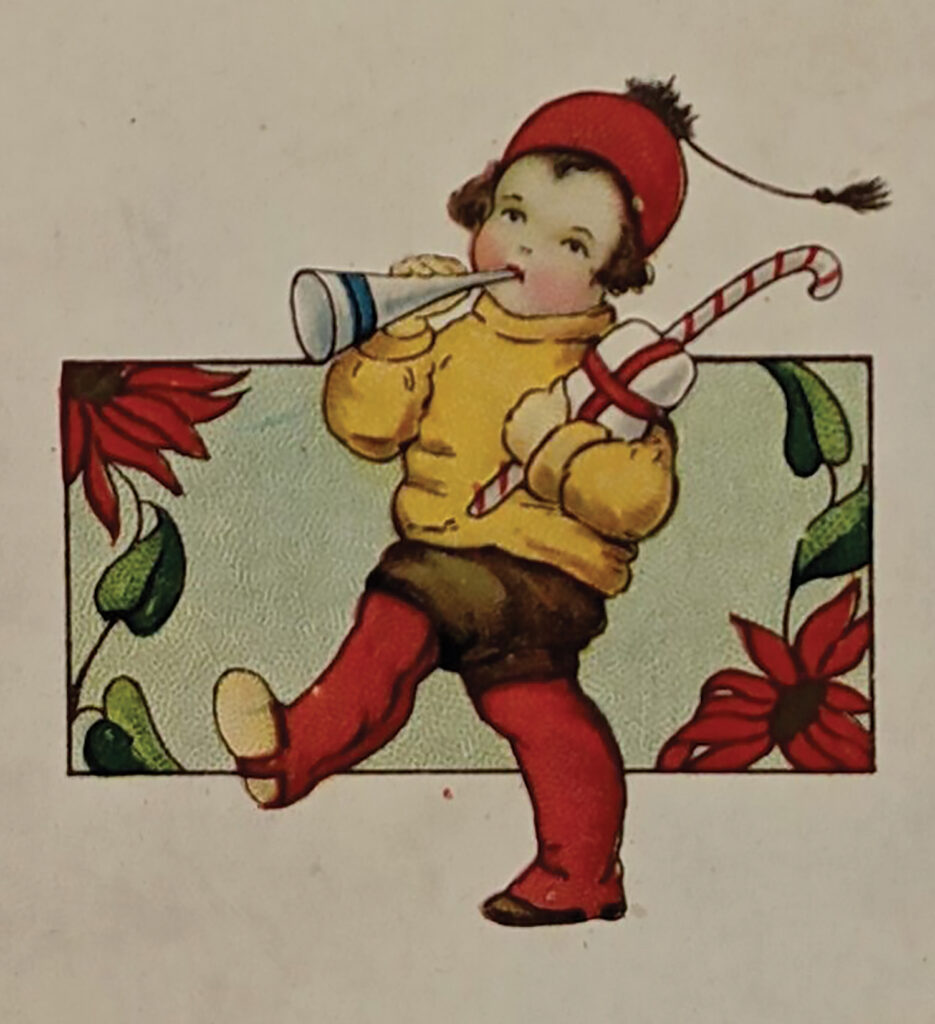
Swedish candy maker Amalia Eriksson, a 35-year-old widow, is credited with giving the pulled sugar its stripes. Erikson opened a shop in the town of Gränna to support her family in 1858. She called her candy polkagris, which means polka pig. Polka is a folk dance, and the twists in the peppermint invoke the dancers spinning. Pig was the word for candy. Polkagris is one of the most popular souvenirs of Sweden.
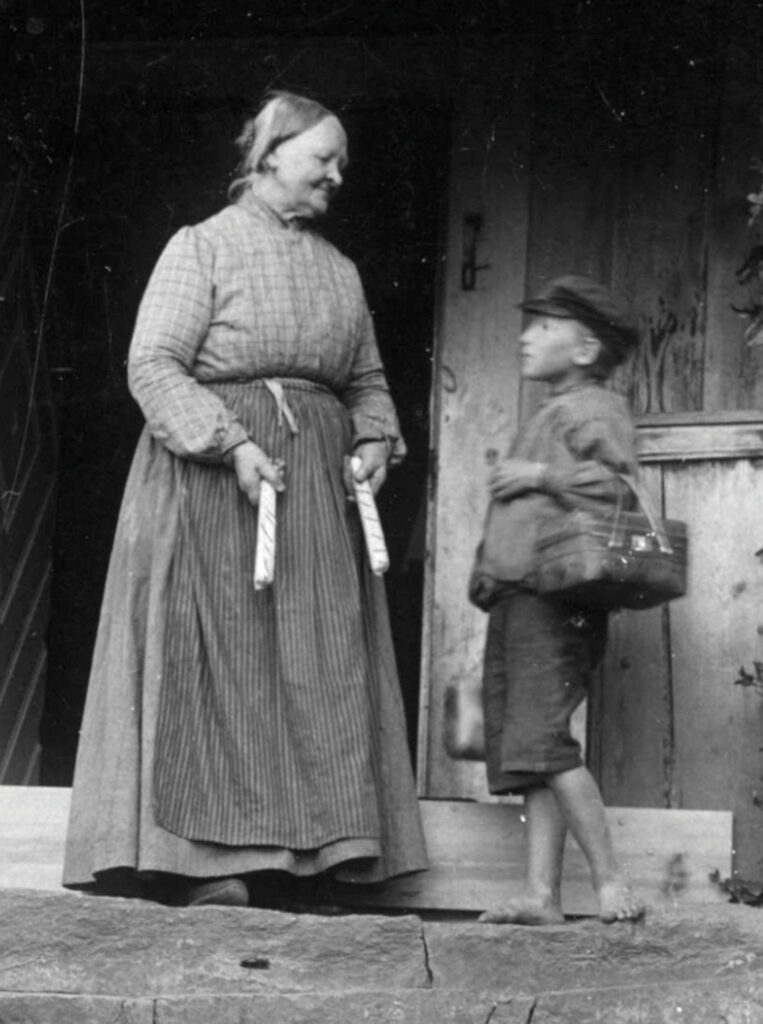
Another explanation is that of McCormick & Company, an American food company founded in Baltimore in 1889, dealing in flavors, spices and herbs. McCormick & Company is said to have begun making the red and white candy in the 1920s as a marketing tool. By the 1950s the company dominated the candy cane market.
Christians believe the red stripes represent the shed blood of Christ, the white is seen as a symbol of purity, and the peppermint represents hyssop, associated with purification in the Old Testament. Some say the candy cane’s hook represents the letter J, a reference to Jesus.
Peppermint is an aromatic natural hybrid of spearmint and wild mint plants. It has a variety of uses including warding off rodents, soothing pain and itching, and relieving nausea. It is valued as anti-inflammatory and anti-microbial. It flavors toothpastes, mouthwash and gum.
Peppermint is calming and can almost always be found in legal office waiting rooms. It flavors desserts and is drunk in teas.
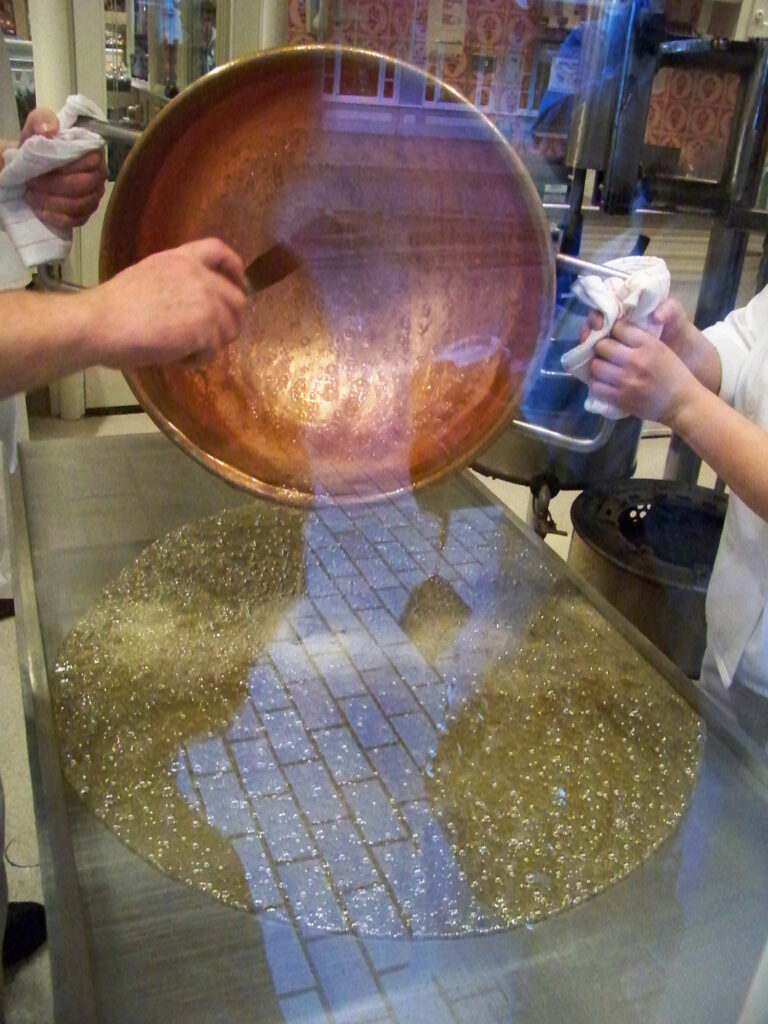
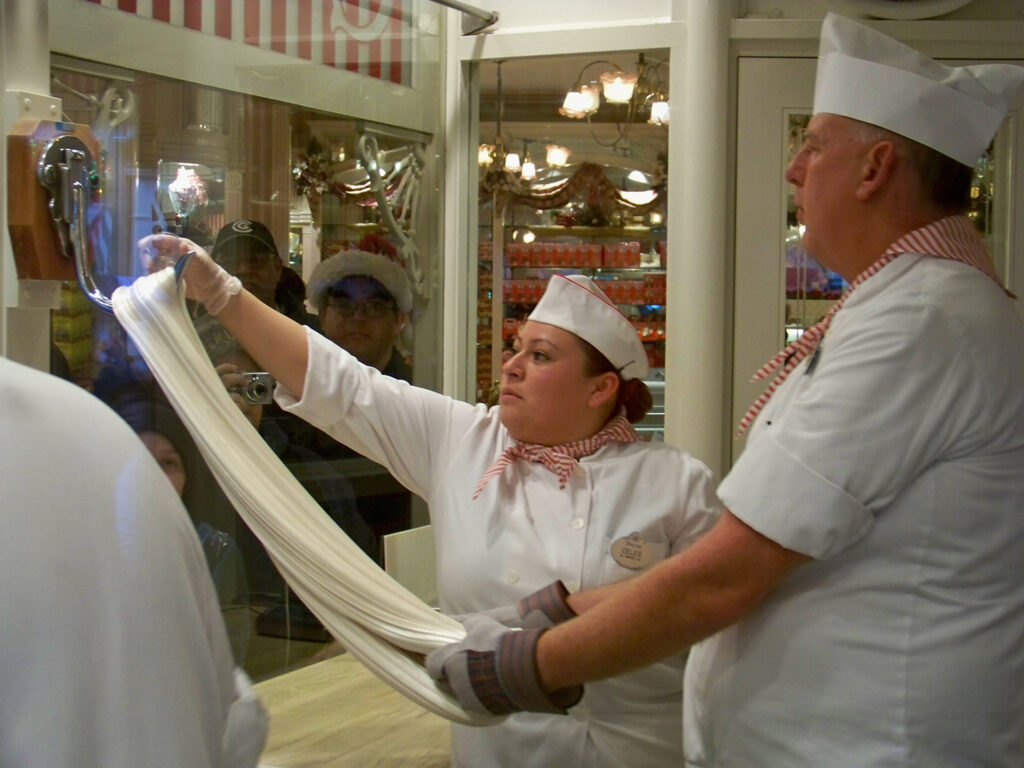

At Christmas time what could be better than peppermint and chocolate combined with something creamy? Peppermint brownies can be made in the traditional way and sprinkled with chopped peppermint candies on top. Peppermint bark is a combination of white and dark chocolate sprinkled with chopped peppermint candy. Melt chocolate, crush candy canes, combine, then drizzle over hot popcorn.
Peppermint Tea
Hot Peppermint Tea
Ingredients
- 7-10 fresh peppermint leaves or 1 peppermint tea bag
- Honey, milk or lemon to taste. Add a candy cane as a garnish.
Iced Peppermint Tea
Ingredients
- 30 fresh peppermint tea leaves or 3-5 peppermint tea bags
- 4 cups water
- Honey and/or lemon to taste. Add a candy cane as a garnish.
Preparation for both:
Boil the water and pour over the tea leaves or tea bags (1 per cup). Cover to keep steam from escaping. Let the tea steep for desired strength. Remove the bag or leaves with a strainer. Add honey (or sugar), milk and/or lemon. Add a candy cane as a garnish.
When using fresh leaves, use 7-10 per cup. Wash to remove any dirt then lightly crush, but do not mash between your fingers or use a mortar and pestle or even the back of a spoon.
For iced tea, add honey (or sugar) and/or lemon while the tea is hot, stir. Allow to cool before serving with ice. Add a candy cane as a garnish.
